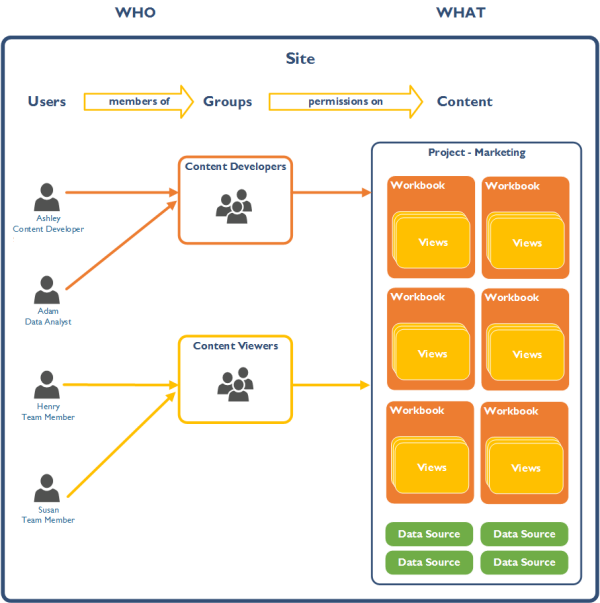Tableau server, a product from Tableau, is an online platform that provides employees within an organisation a safe space to collaborate and interact with Tableau content and different data types in a very efficient way. It allows users to easily create, share and store projects, data sources, workbooks, etc. To understand better Tableau Server’s functionality, we first need to understand its structure.
Server Structure

Image from https://help.tableau.com/current/guides/everybody-install/en-us/everybody_admin_permissions.htm
Sites
An organisation can create several sites within its server, and it’s important to note that each site represents a separate entity and content, with no communication between 2 sites. An organisation that has affiliate offices in different cities would have a site for each of those offices, for example.
Projects
Projects are created within sites to organise data sources and workbooks that are related to each other. Projects can be created within other projects. A server admin can create projects for each distinct team.
Groups and Users
Groups are created by a site admin to facilitate assignment of projects and user permissions. When a server administrator creates a site, they can dictate the level of access users can have. The levels range from Server Administrators, who can manage, create sites, and assign access to all users, through to Viewers who can only read and consume the content.
Workbooks
Workbooks are created using either Tableau Desktop or Web Authoring (Tableau editing online). Workbooks contain sheets and sheets can be a worksheet, a dashboard, or a story. Workbook views and interactive filters can be set up differently to each user or user groups.
Data Sources
Data sources published to Tableau server can be shared with other users so anyone with access to it can create workbooks using the same data. When that data source is updated, all workbooks created from it will be updated as well.
For more information on understanding Tableau Server, visit Get Started with Tableau Server.
